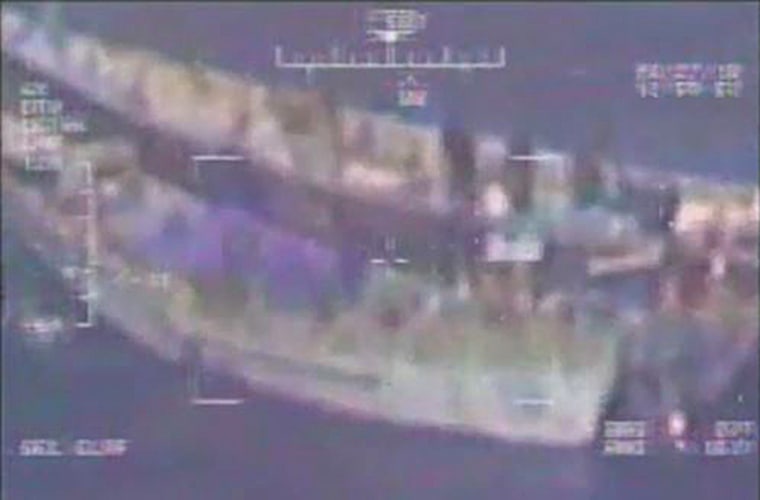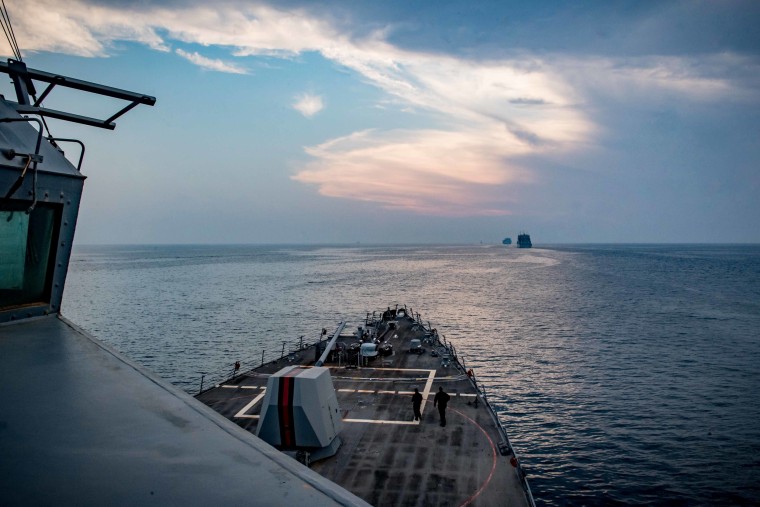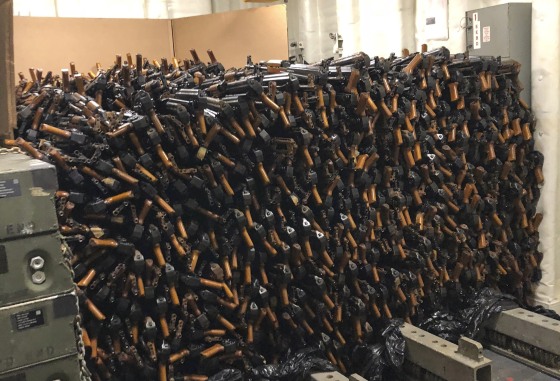GULF of ADEN — Arms experts from the U.N. boarded a U.S. Navy ship here Thursday to investigate whether more than 2,500 AK-47 assault rifles that U.S. sailors seized from a small boat off the coast of Somalia were en route to Yemen's Houthi rebels.
The U.S. suspects the rifles were bound from Somalia to Yemen to aid the Houthis in the nation's three-year-old civil war, and that Iran was involved.
On Aug. 27, a helicopter from the USS Jason Dunham, a guided missile destroyer, was sent to monitor the suspicious activities of two boats in the Gulf, a dhow and a small skiff. While overhead during the dark of night, the helicopter took video of the men on the boats moving cargo from the dhow to the skiff, according to U.S. military officials.

Early the next morning, two Rigid Hulled Inflatable Boats (RHIBs) with a security team from the Dunham boarded the skiff, which was not registered to any nation, and found the weapons. There were hundreds of green plastic bags on the boat, and each bag held three or four brand-new AK-47s.
Click here to watch video of the smugglers moving the guns from the dhow to the skiff
The U.S. destroyer began to tow the skiff with its passengers and weapons on board, but the seas became rough and the small boat began to take on water. The passengers were brought on board the warship, and the Americans moved most of the rifles onto the Dunham.
The U.S. then sank the skiff, to ensure it didn't become a hazard in the busy waterway. "We just shot it," said Vice Adm. Scott Stearney, who is commander of the Navy's Fifth Fleet and U.S. Central Command's Naval Forces.
Not all weapons were removed before the boat sank. "There was some number of weapons, probably another 500," said Stearney, that went down with the boat.
In all, U.S. sailors moved 2,521 AK-47s from the skiff to the destroyer. The men aboard the skiff, who said they were Yemeni, were turned over to the Yemeni Coast Guard.
Nearly two months later, the AK-47s are still stacked on the decks of the Dunham and have begun to rust. Stearney says the U.S. will determine what to do with the assault rifles after the U.N. team makes their recommendations.

Ships from the U.S. and other nations in the Combined Maritime Forces coalition based in Bahrain that patrols the region's waters have seized weapons four other times since 2015. Previous interdictions have also found thousands of AK-47s, rocket launchers, and even missile guidance sets. All of the arms originated in Iran and were intended to be delivered to the Houthis in Yemen, according to U.N. inspection teams brought in to examine the cargo.
Even though this load did not include precision weapons, Stearney said it was significant, calling the AK-47 "probably the most destabilizing weapon that has ever been produced."
A U.S. official in the region says Bahraini authorities have also been seizing weapons of Iranian origin in the Persian Gulf. The Bahrainis have found C4 explosives, IED components, and assault weapons. Some of those weapons have already been transferred to Bolling Air Force Base, where the U.S. has a static display of Iranian weapons and components that have been used or seized throughout the Central Command region, the official said.
In addition, the movement of illegal drugs through the region's waters has skyrocketed this year.
Since 2012, the coalition has intercepted more than 32,300 pounds of heroin and more than 175,917 pounds of hash.
But in 2018 alone, the coalition has already stopped more than 6,600 pounds of heroin and more than 66,000 pounds of hashish.
Stearney added that the coalition is only catching "a fraction" of what moves through the region.
After years of having one or two U.S. Navy aircraft carriers in the Persian Gulf, the U.S. has not had a carrier in the Gulf at all since March of this year. But a defense official said the U.S. "expects to have [a carrier here] before the end of the year."

